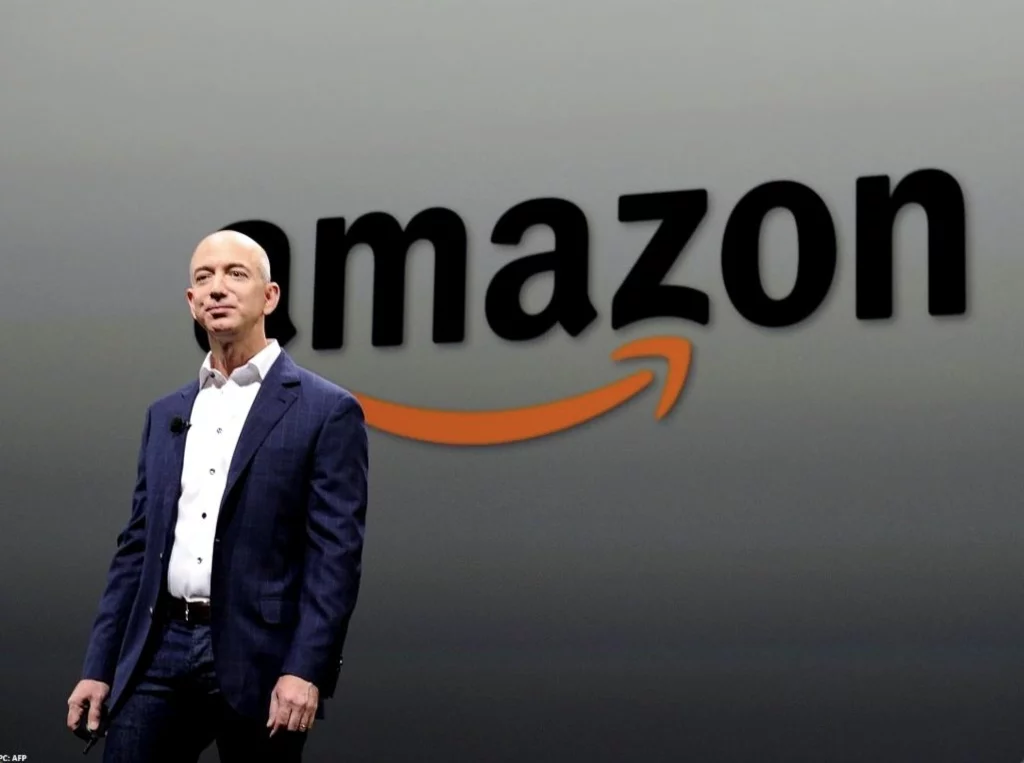Unveiling Amazon’s Evolution From Online Bookstore to E-Commerce Giant

In the late 1990s, the digital landscape was a burgeoning realm of possibilities, but few could have predicted the seismic shifts it would undergo. At the heart of this transformation was Amazon, a company that began as an online bookstore and evolved into one of the most influential e-commerce giants in the world. This article explores the journey of Amazon, highlighting its growth, innovations, and impact on the global market.
The Humble Beginnings: Amazon’s Foundation
Founded in 1994 by Jeff Bezos, Amazon.com initially started as a modest online bookstore operating out of Bezos’s garage. The company’s initial focus was simple: to offer a vast selection of books, which was a novel concept at the time. The vision was clear: provide customers with a more convenient way to shop for books than was possible in traditional brick-and-mortar stores.
Amazon’s early success was driven by its user-centric approach and the innovative use of technology. The company’s website was designed to be intuitive, and its business model emphasized customer satisfaction through a vast inventory and competitive pricing. This focus on customer experience laid the foundation for Amazon’s future growth.
Diversification and Innovation: Expanding Beyond Books
As Amazon gained traction, it quickly diversified its product offerings. By the late 1990s and early 2000s, the company expanded its inventory to include electronics, toys, and household goods. This diversification was a strategic move to become a one-stop-shop for consumers, which significantly broadened its market appeal.
A pivotal moment in Amazon’s expansion came with the launch of Amazon Prime in 2005. This subscription service offered members free two-day shipping, a move that set a new standard in e-commerce logistics. Amazon Prime’s success was not just in its delivery speed but also in its additional perks, such as access to streaming services and exclusive deals, which kept customers engaged and loyal.
Technological Prowess: Pioneering Innovations
Amazon’s growth has been closely tied to its relentless focus on technology and innovation. One of the company’s most significant technological advancements is its cloud computing service, Amazon Web Services (AWS). Launched in 2006, AWS revolutionized the IT industry by providing scalable, on-demand computing power and storage to businesses of all sizes. AWS has become a cornerstone of Amazon’s financial success, generating substantial revenue and helping fund its other ventures.
Another groundbreaking innovation was the introduction of the Kindle e-reader in 2007. The Kindle transformed the way people read books, making e-books more accessible and convenient. The success of the Kindle also played a crucial role in the growth of Amazon’s digital content ecosystem, which now includes a vast library of e-books, audiobooks, and digital magazines.
Marketplace Model: Empowering Third-Party Sellers
In addition to its own product offerings, Amazon introduced a marketplace model that allowed third-party sellers to list their products on the platform. This move not only expanded Amazon’s product selection but also provided a valuable platform for small and medium-sized businesses to reach a global audience. The marketplace model has become a significant revenue stream for Amazon, contributing to its dominance in the e-commerce sector.
The introduction of Fulfillment by Amazon (FBA) further enhanced the marketplace’s appeal. With FBA, third-party sellers could store their products in Amazon’s warehouses, and Amazon would handle storage, packaging, and shipping. This service improved efficiency for sellers and provided customers with faster delivery options.
Global Expansion: Reaching New Markets
Amazon’s growth trajectory has not been limited to the United States. The company has aggressively pursued international expansion, entering markets across Europe, Asia, and Latin America. Each new market presents unique challenges and opportunities, requiring Amazon to adapt its strategies to local consumer preferences and regulatory environments.
For instance, in India, Amazon invested heavily in building a robust logistics network to overcome infrastructure challenges and cater to a diverse and rapidly growing customer base. Similarly, in Europe, Amazon tailored its product offerings and services to meet regional demands and regulatory requirements.
Sustainability and Future Directions: Navigating Challenges
As Amazon continues to grow, it faces increasing scrutiny regarding its environmental impact and labor practices. The company has committed to sustainability goals, including achieving net-zero carbon emissions by 2040. Initiatives like investing in renewable energy, electric delivery vehicles, and sustainable packaging reflect Amazon’s efforts to address environmental concerns.
Looking ahead, Amazon’s future directions include further advancements in artificial intelligence, automation, and robotics. The company is also exploring new business areas such as healthcare and autonomous delivery systems. The ongoing challenge will be balancing innovation with ethical considerations and maintaining its competitive edge in a rapidly evolving market.
Conclusion: Amazon’s Legacy and Impact
Amazon’s evolution from a small online bookstore to a global e-commerce titan is a testament to its visionary leadership, technological innovation, and relentless pursuit of customer satisfaction. As the company continues to shape the future of retail and technology, its impact on the global market remains profound. Understanding Amazon’s journey offers valuable insights into the dynamics of modern commerce and the potential for future disruptions in the digital age.


